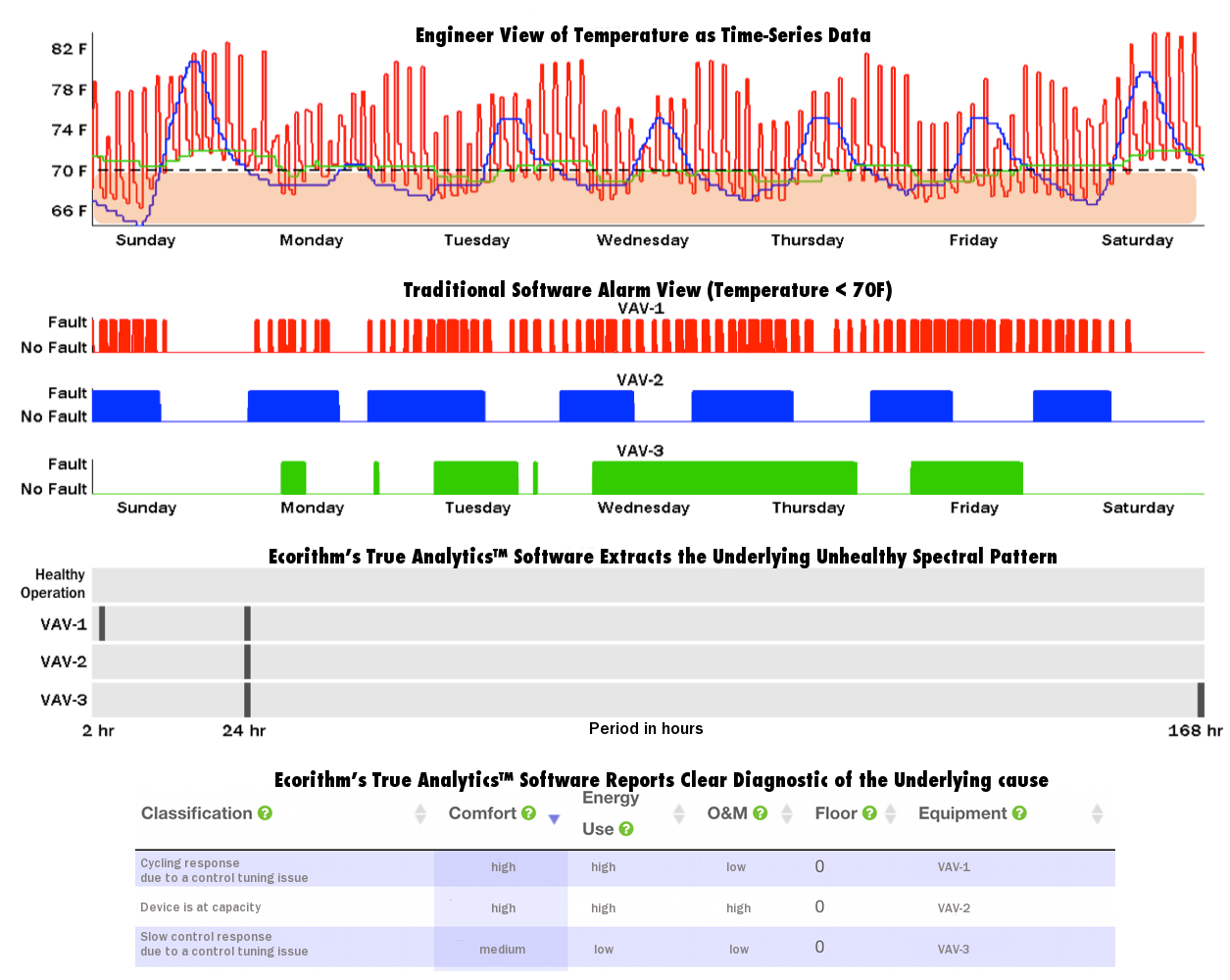
|
July 2016 |
[an error occurred while processing this directive] |
| Infusing
Machine Learning with Artificial Intelligence As anyone who endures a call with an automated customer “help line” quickly learns, robots have a frustrating inability to understand sarcasm. Tweet |
Sophie Loire, Ph.D., Research and Technology Fellow, Chris Tagge, Ph.D., CEO, Igor Mezic, Ph.D., Chief Scientific, Technical Advisor, Co-Founder Ecorithm, Inc. |
| Articles |
| Interviews |
| Releases |
| New Products |
| Reviews |
| [an error occurred while processing this directive] |
| Editorial |
| Events |
| Sponsors |
| Site Search |
| Newsletters |
| [an error occurred while processing this directive] |
| Archives |
| Past Issues |
| Home |
| Editors |
| eDucation |
| [an error occurred while processing this directive] |
| Training |
| Links |
| Software |
| Subscribe |
| [an error occurred while processing this directive] |
As anyone who endures a call with an automated
customer “help line” quickly learns, robots have a frustrating
inability to understand sarcasm. It only takes a few minutes of the
pseudo-friendly automaton cycling through endless menu selections to
trigger a lunge for the 0 button and a desperate plea for “AGENT!” Yet,
we’re happily dependent on automation for much of our daily lives.
We’re even becoming accustomed to the idea that self-driving cars will
soon lower our insurance rates and enable virtually uninterrupted
texting during waking hours. Automation is now so ubiquitous that it’s
strange to think that we’re entirely at ease with the robots, until we
have to talk to them.
But don’t blame the machines. It turns out that communication is an
exceptionally complex, dynamic process and humans (and many animals)
are amazingly proficient at the type of contextual learning required to
master it. The mechanisms are so intricate that we don’t fully
understand how the brain does it. We’re still just scratching the
surface of the field of artificial intelligence, but the combination of
elements of human-like perception with a machine’s ability to process
immense amounts of data, consistently and reproducibly, without fatigue
or soul-crushing boredom, is already having profound impacts on
analysis and automation.
For decades, technologists have been quite successful programming
machines to learn and adapt within well-defined constraints. This
machine learning is a subset of the field of artificial intelligence
and does not attempt to perform the full range of human cognitive
abilities. Rather, the machine typically “learns” in a reactive
fashion. At a high level, the machine receives a sensory input,
scans its database of previous or programmed responses to that input,
reacts, defines the success of the reaction based on the subsequent
sensory inputs, and then remembers whether outcome was good or bad to
influence the next decision point. In effect, traditional machine
learning approaches (such as polynomial regression, support vector
machines (SVM), artificial neural networks (ANN), and decision trees)
in which they treat every point in time as an isolated event.
This is great for avoiding accidents on the freeway, where success and
failure can be swiftly defined and measured. But what of more complex
systems like buildings where meanings and outcomes are variable,
time-dependent, and influenced by a variety of subtle, often unmeasured
inputs?
The answer is that machine learning for buildings is a surprisingly
difficult challenge. Buildings are strongly influenced by dynamic
forces such as occupancy, weather, and other environmental factors on a
variety of overlapping cycles (intradaily, daily, weekly, monthly, and
seasonal, to name a few). Most classic machine learning and data mining
algorithms work poorly on time series data - typically transforming
time-dependent inputs into multiple static input parameters, which
loses the specificity and context of the data.
Fortunately, physical systems with time dependent
fluctuations can be
well-understood by looking at the characteristics of the repeated
cycling or oscillatory behavior in the data. Skilled, experienced
building engineers develop an intuitive feel for quickly diagnosing
their building from looking at the data available to them. The human
brain naturally performs pattern recognition grouping similar
experiences and assigning labels to these groups. When a new data set
is encountered, it is compared to the past experiences and a diagnostic
is inferred. In other words, new information is not evaluated
independently. Rather, it is reviewed and categorized based on past
experience and all relevant context. This is what learning is all about
and it is remarkably easy for a human brain.
Returning to the language analogy,
the sentence “I
never said she stole
my money” is internet famous for having seven distinct meanings
depending on which of the seven words is emphasized (try it). The
historical context of the statement and how it’s said (e.g., shouted,
whispered, with a sneer, etc.) can create even more complexity. This
would be a difficult, laborious problem for machine learning.
Essentially, each of the many different meanings would need to be
specifically detailed and the machine would have difficulty determining
accuracy by context, instead simply searching for the answer with the
highest statistical probability, meaning the one that most often
occurred in the past. Thus, systems approaching these types of complex
problems are typically programmed to error on the side of caution by
presenting a variety of different potential solutions and relying on
humans to do the interpretation.
[an error occurred while processing this directive]For a human, the interpretation is simple,
straightforward, and exceptionally accurate. The human auditory system
is finely tuned to detect and process cycling patterns (pitch, timing,
and volume) and can detect subtle changes and deviation and extract
signals from substantial noise. These properties provide metadata that
enables the listener to accurately interpret the context and thus
intended meaning of the sentence. Further still, the greater the shared
experience between the two communicators, the more compressed the
information can be, sometimes to the extent that words are barely
needed at all.
Ecorithm’s True Analytics™ software combines several key elements of
artificial intelligence with machine learning to rapidly and
automatically identify and classify building data with exceptional
accuracy. Similar to the metadata embedded in the communication example
described above, each time series of building data and its underlying
dynamic can be completely described by a set of triplets corresponding
to its magnitude (similar to volume, this is the height of the
oscillation), period (similar to pitch, this is the time scale of the
oscillation), and phase (similar to timing, this is the starting point
alignment of two time series of data with respect to a common time
origin). The result is called the spectral pattern, which provides an
automatically measurable and classifiable signature of behavior.
Ecorithm’s machine learning algorithm classifies time series signals by
their spectral patterns using proprietary clustering and labeling
techniques. Properties of the spectral patterns in a cluster give
information about the system in term of mechanical, and control
performances. Operational and energy efficiency opportunities are
identified by looking at the classification of healthy states. The
underlying expert knowledge, built-in to the system, translates into
readable and actionable diagnosis through the introduction of a
supervised learning layer. Prioritization can then be assigned
depending on the level of severity of the findings.
Similar to a human interpreting communication, Ecorithm’s True
Analytics™ software incorporates experience, context, and emphasis to
pinpoint root cause diagnostics of building data with exceptional speed
and accuracy. The artificial intelligence infused machine learning
component of Ecorithm’s True Analytics™ software enables continuous,
complex and complete analysis of a building system giving an in-depth
understanding of building performance. This component also provides a
significant increase of operational reliability, energy efficiency, and
logistic efficiency, greatly benefiting building occupant comfort.

Figure 1: This graphic illustrates the intuitive cycling pattern recognition of a building engineer leading to his ability to diagnose simple issues. The three different room temperature time series are associated to three different VAV issues with signature cycling periodicities. However, humans are limited to the analysis of only a small data set and cannot handle the massive amounts of raw data generated by a building. The machine learning algorithms of Ecorithm’s True Analytics™ software enable the complete analysis of all the building data and automatically extract the intrinsic spectral patterns associated to an issue enabling the report of clear diagnostic.
About the Authors
 Dr. Sophie Loire:
Dr. Sophie Loire:
Dr Loire is an accomplished expert on dynamical systems. Before joining
the Ecorithm team as Research and Technology Fellow, she was a project
scientist in Professor Igor Mezic research team at University of
California, Santa Barbara and a lead consultant for AIMdyn, Inc
developing critical tools for the study of complex systems from
improved physical or mathematical models to new computing algorithms.
Dr. Loire’s research involving the 2010 Gulf of Mexico oil spill was
published in the prestigious journal Science and was promptly
highlighted by newspapers around the world, including UPI, Spiegel in
Germany, The Engineer in the UK, El Pais in Spain, and the newspaper
Panorama in Italy.
Dr Loire holds a Ph.D in Mechanical Engineering from University of
California, Santa Barbara.

Dr.
Chris Tagge:
Dr. Tagge has a proven track record of leading startups of innovative
technologies with a focus on sustainability from concept to
commercialization. Additionally, Dr. Tagge is an expert in intellectual
property development and strategy. He holds seventeen US patents and
has managed global intellectual property strategies for multiple
companies, including Ecorithm.
Before founding Ecorithm, Dr. Tagge was president of Innovative
Construction & Building Materials, a highly successful startup that
developed advanced technologies to enhance critical properties of
building materials. Previously, Dr. Tagge held the positions of CEO at
LivinGreen Materials and Senior Scientist at SRI International.
Dr. Tagge holds a Ph.D. in Chemistry from University of California,
Berkeley and was a Postdoctoral Fellow at Stanford University.
 Dr. Igor Mezic
Dr. Igor Mezic
Dr. Mezic is a world-renowned expert in the field of building energy
efficiency. He is a Professor of Mechanical Engineering at University
of California, Santa Barbara (UCSB), where he serves as Director of the
Center for Energy Efficient Design, and Head of the Building and Design
Solutions Group at the Institute of Energy Efficiency. UCSB’s Institute
for Energy Efficiency – where Prof. Mezic is a founding member – is an
interdisciplinary research institute dedicated to the development of
cutting-edge science and technologies that support an efficient and
sustainable energy future. Dr. Mezic is also an expert in complex
dynamical systems, both a member of the Center for Control, Dynamical
Systems and Computations, and the California Nanosystems Institute.
His major scientific contribution in this field has been the development of operator-theoretic methods for analysis of complex dynamical systems, that led to a massive number of applications in “Big Data Dynamics” – a term he coined.
After
receiving his Ph.D. at
Caltech in Applied and Theoretical Mechanics, Dr. Mezic became an
Assistant Professor at UCSB, where he was promoted to a Full Professor
in 2003. Dr. Mezic also served as an Associate Professor at the Harvard
School of Engineering and Applied Sciences.
[an error occurred while processing this directive]
[Click Banner To Learn More]
[Home Page] [The Automator] [About] [Subscribe ] [Contact Us]